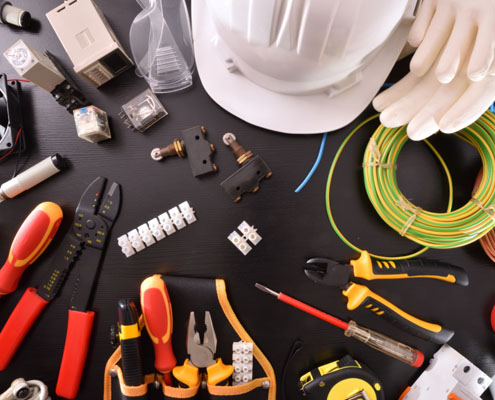Cutting-Edge Technology with BRE Automation Australia Services
The Ultimate Overview to Electric Installment: Tips and Strategies for a Safe and Effective Home Wiring System
In the world of home upkeep, few elements are as crucial yet commonly ignored as the electrical wiring system. Making sure a secure and effective home circuitry setup requires not only a standard understanding of electrical concepts but also practical knowledge of installment strategies and maintenance procedures. From navigating the complexities of cable links to troubleshooting typical concerns that may develop, this overview intends to equip home owners with the crucial tips and devices essential for a safe and energy-efficient electrical system. By discovering the nuances of electric safety and security measures and energy-saving methods, this detailed guide will clarify the details of home circuitry, empowering people to take charge of their family's electrical facilities.
Understanding Electric Precaution
To make sure the security of both individuals and residential or commercial property, understanding and executing correct electric precaution is paramount in any type of home wiring job. Power is an effective force that can be hazardous if not managed with care. Among the fundamental security steps is guaranteeing that all electric job is executed by certified experts who follow neighborhood building codes and policies. It is vital to carry out a complete evaluation of the electric system before beginning any wiring job to identify prospective hazards or problems that require to be dealt with.
Additionally, making use of the appropriate tools and devices is essential for maintaining safety during electrical setups. Shielded handwear covers, voltage testers, and safety eyewear are some of the basic security gear that must be used to protect against electric shocks or crashes. It is also important to de-energize circuits prior to dealing with them and to label all circuits and breakers clearly to stay clear of confusion.

Vital Tools for Home Circuitry
Guaranteeing the appropriate implementation of electric safety actions in home circuitry tasks includes making use of a certain collection of necessary devices designed to promote the setup process successfully and securely. Some of the key tools required for home electrical wiring projects consist of a voltage tester for checking real-time cords, cord pole dancers for eliminating insulation from wires, a cable cutter for precisely reducing cables to size, a screwdriver set for securing electrical parts, electric tape for insulation and protecting links, a wire ripper for stripping cable sheathing, and a multimeter for gauging voltage, existing, and resistance.
Step-by-Step Electrical Setup Guide
Starting an electric installation project requires meticulous planning and adherence to security standards. Prior to beginning any job, guarantee you have an in-depth plan describing the design of the electric system, including the positioning of electrical outlets, switches, and fixtures. Take into account the power demands of each device to establish the ideal cable scale and breaker sizes.
The very first step in the setup process is to turn off the power supply to the area where you will be working. Use a voltage tester to confirm that the circuits are de-energized before touching any type of cables. Next, thoroughly get rid of existing fixtures or outlets and separate the cables.
When setting up new electrical wiring, run cables with wall surfaces and ceilings, protecting them in position with appropriate fittings. Follow neighborhood building regulations and manufacturer guidelines for correct cord installation and connections. BRE Services. More hints Ensure to identify cables for very easy recognition and future maintenance

Troubleshooting Common Circuitry Issues
Having actually completed the installation procedure as outlined in the previous subtopic, troubleshooting common circuitry concerns is an important skill for ensuring the safety and performance of your electrical system. One usual problem is a stumbled circuit breaker, often triggered by overloaded circuits or a short circuit. To fix this, find the breaker panel, identify the stumbled breaker by seeking the one not totally in the "on" setting, and reset it by flipping it totally to "off" and afterwards back to "on." One more common trouble is a malfunctioning electrical outlet, defined by no power or periodic power supply. Ensure the electrical outlet is not controlled by a button, then use a voltage tester to look for power. If there is no power, transform off the circuit, inspect the circuitry connections anchor for any type of loose or broken wires, and change the outlet if necessary. Constantly flickering lights can suggest loose circuitry links or an overloaded circuit. To address this, check and tighten up all wire links in the affected fixtures and buttons and rearrange the tons on the circuit to stabilize the electrical demand. Frequently examining and quickly resolving these usual electrical wiring problems will certainly keep the safety and effectiveness of your home electrical system.
Tips for Energy-saving Electric Systems
For optimum power effectiveness in electric systems, carrying out smart methods and using energy-saving technologies is paramount. One key idea for accomplishing an energy-efficient electric system is to update to LED illumination. Correct insulation and sealing of windows, doors, and electrical outlets can likewise avoid energy loss, ultimately minimizing the workload on electric systems.
Conclusion
To conclude, executing correct safety and security actions, using necessary tools, following a step-by-step installment guide, fixing usual concerns, and incorporating energy-efficient tips are crucial for a risk-free and efficient home circuitry system. By sticking to these techniques, property owners can make sure the longevity and functionality of their electric setups. It is her latest blog very important to focus on security and performance when it comes to electric operate in order to avoid prospective threats and to maintain a reputable electrical system in the home.